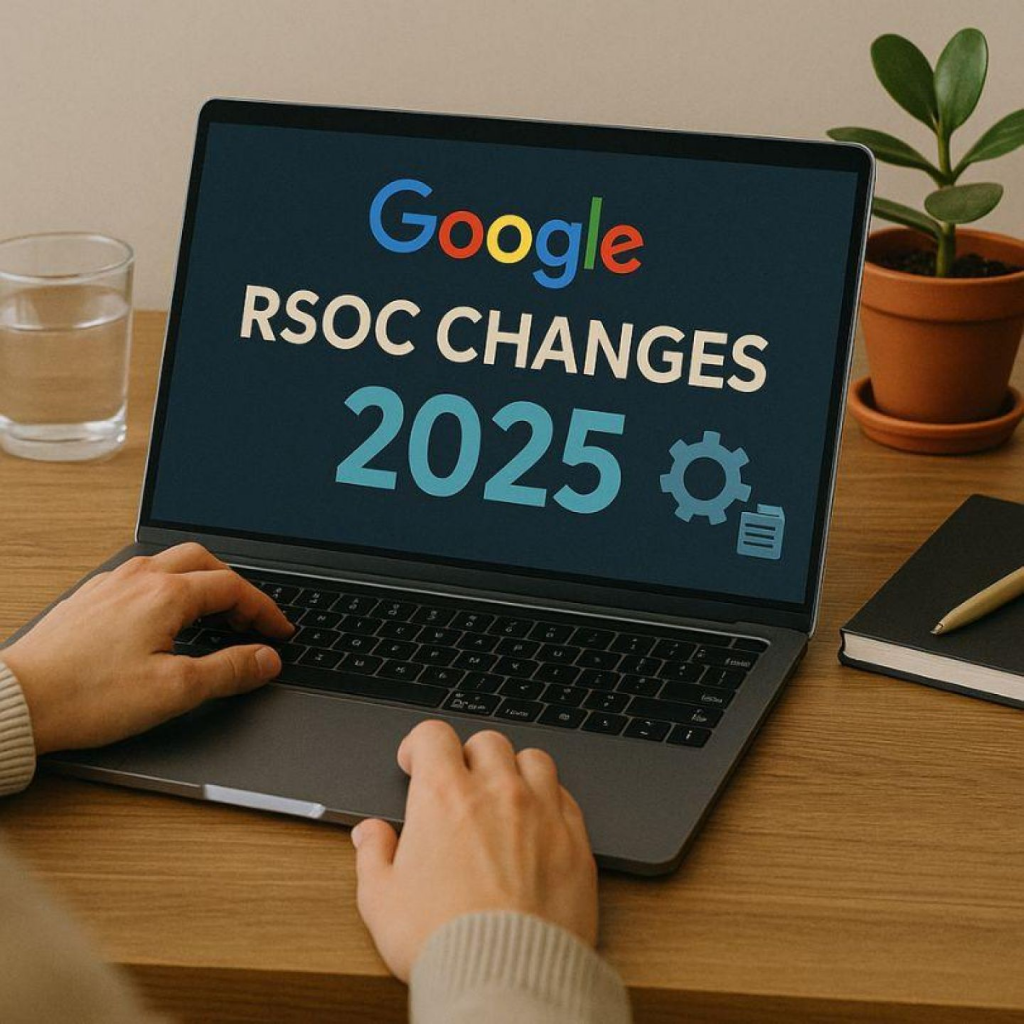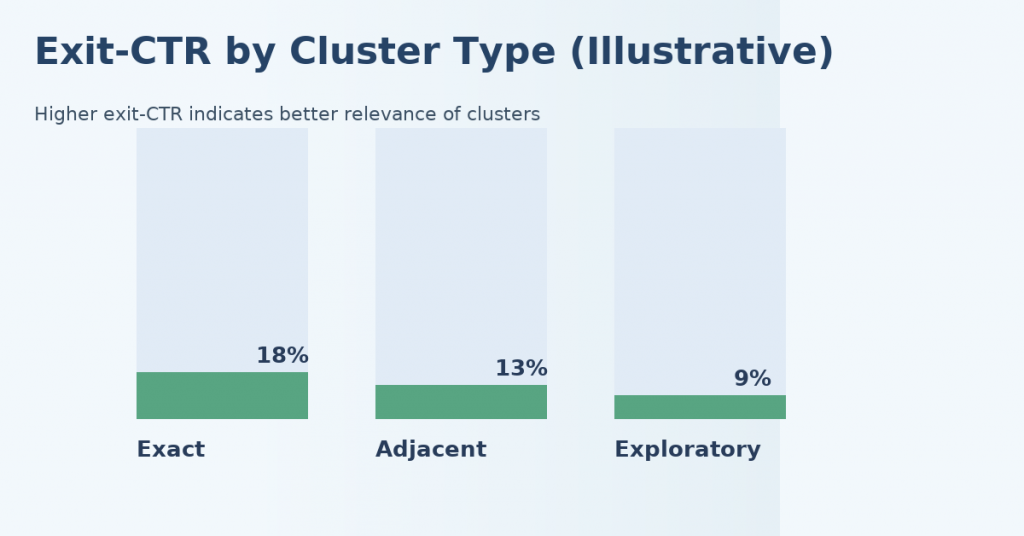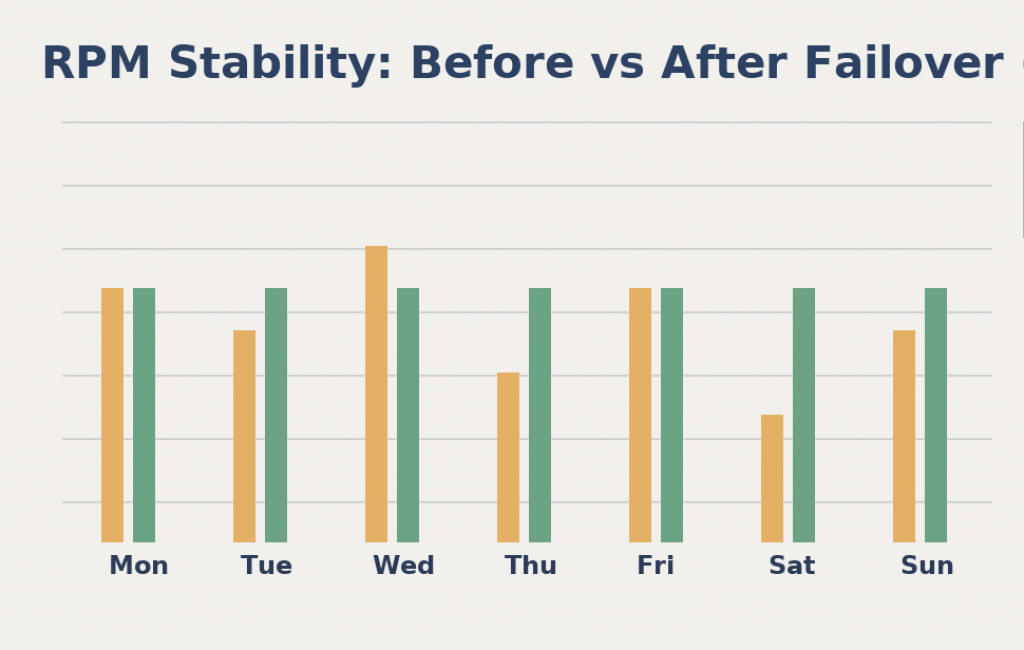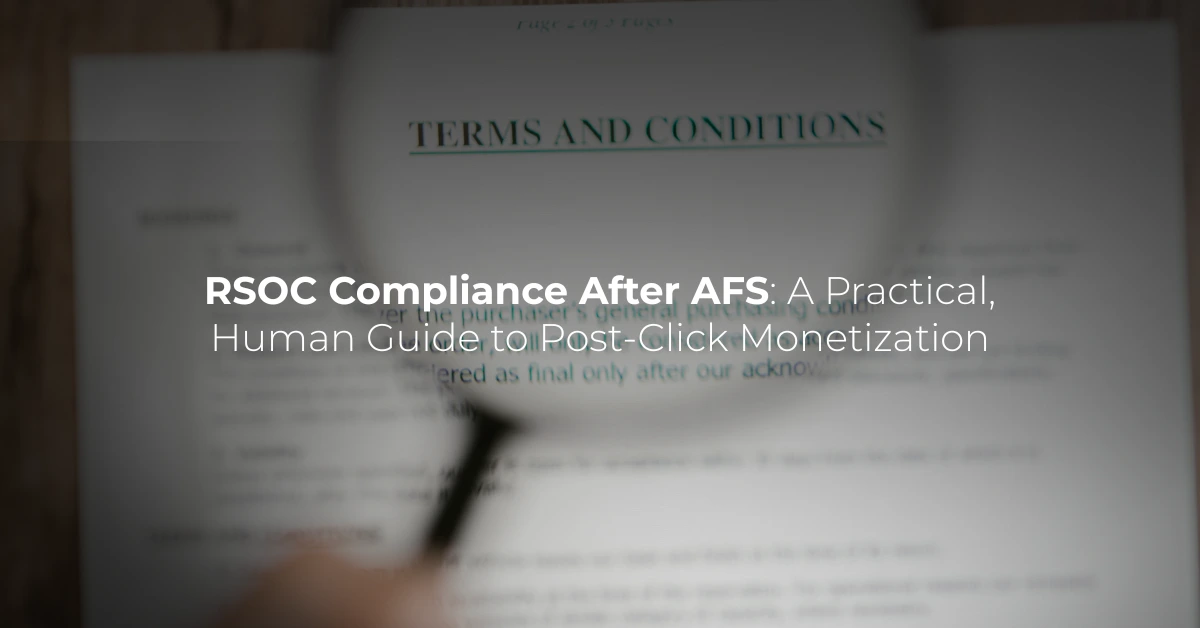
RSOC Compliance After AFS: A Practical, Human Guide to Post-Click Monetization
If you worked in search arbitrage over the last few years, you felt the ground move. The easy wins from AdSense for Search (AFS) shrank, policy scrutiny intensified, and AI features started absorbing generic clicks. The question isn’t “when does it go back?”, it’s how to build something sturdier. In this post I’ll walk through a pragmatic approach that treats RSOC compliance as a product requirement, leans on multi-feed monetization, and focuses on the one place intent still evolves: after the click.
Why RSOC compliance is a feature, not a tax
When teams hear “compliance,” they often think friction and slowdown. In practice, RSOC compliance is a spec for user experience that also protects revenue. Pages that promise what the headline says, label “Sponsored Results” clearly, load fast on mobile, and present semantically related choices don’t just pass checks, they convert better. Users came to decide, your page should help them do exactly that.
A useful mental shift is to design RSOC first templates, not one off pages. The template handles the promise match (headline + short intro), the placement and labeling of monetized modules, and the structure of related searches. Content teams then swap in clusters that reflect real user intent. Because the rules live in the template, consistency and auditability improve, which in turn reduces policy incidents.

Post-click intent beats pre-click fights
Pre-click auctions are crowded and expensive. But the moment a visitor lands, intent keeps evolving. Maybe they arrived on “best credit-building card” and realize a “secured vs. unsecured” comparison would be smarter. Or a traveler lands on “cheap months for Barcelona” and pivots to “train vs. low-cost flight.” This is where RSOC compliance dovetails with business outcomes: a page that offers 8–12 relevant options grouped into exact, adjacent, and exploratory clusters, lets users self-select the next step without tricks.
From single feed fragility to a resilient stack
That’s the core of post-click monetization. You make it easy, honest, and fast for the user to choose. The result is higher exit-CTR to sponsored results, stronger yield signals, and a healthier quality profile.

The second shift is architectural. Relying on a single search feed made sense when liquidity and policy tolerance were both high. Today, it’s an unnecessary risk. A modern stack runs at least two search feeds plus a secondary rail (affiliate, commerce CPC, or native) behind the same RSOC compliance template. Rotations, RPM floors, and automatic failover smooth bad hours or partner hiccups.
Just as important is instrumentation. The dashboard shouldn’t stop at “RPM.” Track RPM by geo/device/referrer, exit-CTR per cluster type, dwell versus bounce (a proxy for usefulness), and margin per session so you don’t celebrate revenue that costs more than it earns. Add a basic operational metric policy incidents per 1,000 sessions, to keep risk visible. When those numbers live in one place, prioritization stops being a debate and becomes a weekly routine.

What a compliant, high-performing page feels like
A visitor lands and instantly sees a headline that mirrors their query, followed by a short, plain-English intro. The page then offers a tidy set of options: a couple of near-matches, a couple of adjacent angles, and a few exploratory ideas for people still deciding. The monetized module sits where it’s useful and is labeled as “Sponsored Results.” The layout is calm, fast, and touch-friendly. There are no bait-and-switch tricks, no forced clicks, no jumpy elements. That’s RSOC compliance in action and it happens to be what real people prefer.
Under the hood, the rotations select the best performing partner for this geo, device, and time-of-day. If a route underperforms, failover rules change the mix without a deploy. Blocklists handle sensitive terms, weekly reviews keep clusters tight and relevant. None of this feels like “compliance theater.” It feels like craftsmanship.
A simple 30/60/90 to get there
In the first month, your only job is stabilization. Ship two RSOC-first templates in a single vertical, light up multi-feed rotations with sensible floors, and build the dashboard with the metrics above. Expect a few policy nits, fix them in the template so every page benefits.
In the second month, widen the surface area carefully. Add more clusters to winning pages (still relevant, not keyword soup), test headlines against cluster order, and introduce time-of-day pacing. You should already see which geos and devices are carrying yield and which are noise. Prune without mercy.
By the third month, scale sideways and tighten governance. Add a second vertical and secondary geos. Quarantine low-RPM pages automatically until they’re re-tuned. Consolidate partners where you’ve proven value and renegotiate floors. Publish a lightweight playbook what “good” looks like, how clusters are named, where disclosures live, so growth doesn’t break quality.
What to avoid (and why)
It’s tempting to recreate the old “search-like” experiences and hope enforcement misses you. It won’t. Pretend search designs may spike short term RPM, but carry long term risk, more flags, more throttling, more rebuilds. It’s equally tempting to cram pages with random keywords in the name of “coverage.” That only dilutes relevance, hurts exit-CTR, and undermines RSOC compliance signals.
A quieter failure mode is celebrating revenue while margin collapses. Always segment by geo/device/referrer and watch cost alongside RPM. If a route loses money, fix it or kill it. Speed matters, but discipline pays the bills.
Resources worth bookmarking
If you need a clean technical baseline for crawlability and performance, for practical industry note, case studies, the Coinis Blog is a good internal link to add for readers who want to go deeper on content monetization patterns.
The takeaway
The market didn’t “end”; it re-priced shortcuts and rewarded pages that help users decide. RSOC compliance gives you the blueprint. Multi feed monetization gives you resilience. Post-click intent gives you growth that isn’t hostage to any single auction or surface. Put them together and you get a calmer operation: fewer policy fires, steadier RPM, and more room to experiment.
